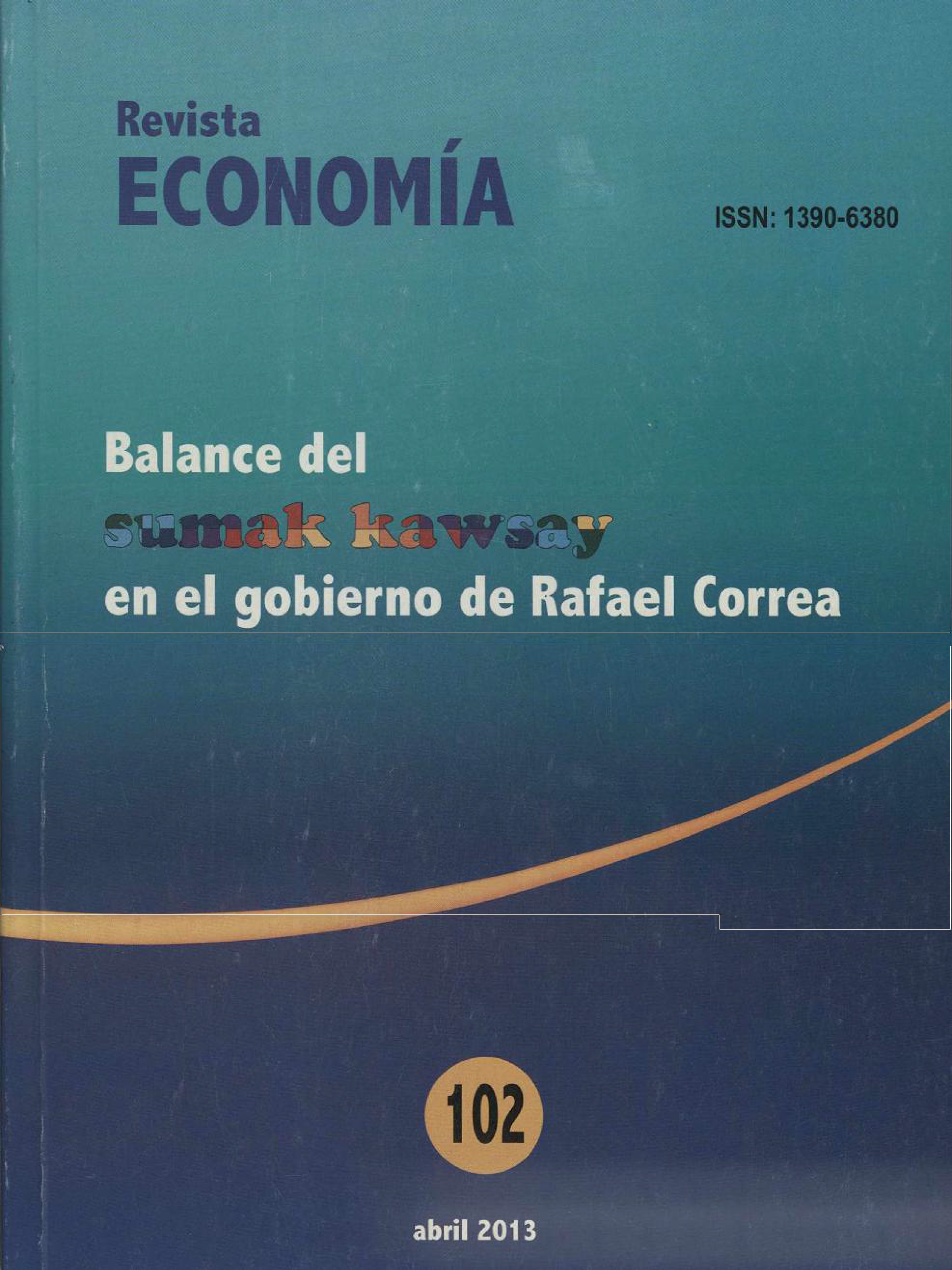Reflexiones sobre la matriz productiva y el sector externo ecuatoriano
Main Article Content
Abstract
This article describes the evolution of productive matrix ¡n Ecuadorian economy and how this affeets country development. Theoretical Framework is connected whit the empirical faets in order to propose hypothesis about the Ecuadorian productive matrix and international sector. National govemment gets a lot of Petroleum money but this money can't change the productive matrix structure, the main answer for this phenomena is the roll of the institutions. How productive matrix is determined by the incentives, created by institutions and politics determines what institutions a nation has. The dual economy, extractive political and economic institutionsare the main characterizes of Ecuadorian economy.There are an important relationship between the International Trade and productive matrix, and the problems in the trade balance have origin en the economic structure and the macroeconomics issues.
Downloads
Article Details

This work is licensed under a Creative Commons Attribution-NonCommercial 4.0 International License.
The authors who publish in this journal accept the following conditions:
- The authors retain the copyright and assign to the Economics Magazine the right of the first publication, with the work registered under Creative Commons Attribution-NonCommercial 4.0, which enables third parties to redistribute, commercial or non-commercial, of what has been published as long as the article circulates completely and without changes.
- Authors can make other independent and additional contractual agreements for the distribution of the article published in this journal (for example, add it to an institutional repository or publish it in a book) as long as they clearly and clearly specify that the article was published for the first time. once in Revista Economía. In case of reproduction, a note similar to the one presented below must be included: This text was originally published in the Revista Economía No.…, volume…, number of pages, year of publication.
- Authors are suggested to publish their work on the internet (for example, on institutional or personal pages) of the final version published by Revista Economía since this can lead to greater and faster dissemination of the published article.
References
AcemogluD. y Robinson (2012) Why Nations Fail: The origins of power, prosperity, and poverty. Crown Publishers.
New York. Astarita R. (2010) Paridad De Intereses Y Tipo De Cambio: Incongruencias En Los Manuales Y Una Alternativa Consultado 10 de Enero de 2013, formato electrónico httlm disponible en http://www.rolandoastarita.com/PARIDAD%20DE%20INTERESES-2.htm
Araque W. (2012) Las PyME y su situación actual. Cuaderno de trabajo N° 1. Universidad Andina Simón Bolívar, formato electrónico Pdf. disponible en http://www.uasb.edu.ec/UserFiles/3 81/File/Las_PyM E_y_su.pdf
BanchardO. y PérezE. (2000) Macroeconomía. Teoría y Política Macreoconómica con Aplicaciones a América Latina. Me. GrawHill.
Banco Central del Ecuador, bases de datos estadísticos, www.bce.fin.ec.
Basu K. (2003) Analyitical Development Economics: The less developed economy revisited. Massachusetts Institute of Technology, EstadosUnidos.
Correa R. (2009) Ecuador: de Banana Republic a la No República.Random House Mandadori. Colombia.
Chang H. (2003) The Market, the State and Institucions in Economic Development en Chang Rethinking development economics Atem Press, India.
Furtado C. (1980) Breve introducción al desarrollo. Fondo de Cultura Económica de México. México. Galeano E. (1971) Las Venas abiertas de América Latina. Siglo XXI México.
Gordillo R, (2003), ¿El oro del diablo? Ecuador: historia del petróleo. Corporación Editora Nacional. Quito.
Lewis K.(1958)Unlimited labour: Further notes. Manchester School.Volume 26, Issue 1
Luna L. (2013) Ecuador: El Cambio De La Matriz Productiva. Consultado en 26 de enero 2013, formato electrónico httlmdisponible en http://solocquenadacbyllunao.blogspot.com/ 2013/01/ecuador-el-cambio-de-la-matriz.html.
Naranjo M. (2005) Dolarización Oficial y Regímenes Monetarios en el Ecuador. Colegio de Economistas de Pichincha. Quito.
North, D (1990) Instituciones, Cambio Institucional y Desempeño económico. Fondo de Cultra
Económica. México.
ToyeJ. (2003) Changin perspectives in development economics, en Chang Rethinking development economics Atem Press, India.
Varea M. (2012) La relación entre instituciones, economía, política y desarrollo, en Gestión: Economía y Sociedad No 219, Quito.
Vidal y Correa E (1998) El concepto de Desarrollo y su transformación en Galarza Coor. Ciencia Económica. Transformación de conceptos. Siglo XXI México.

